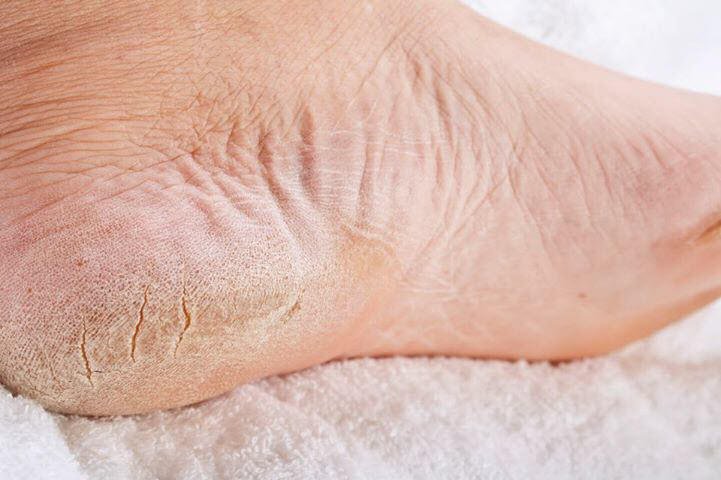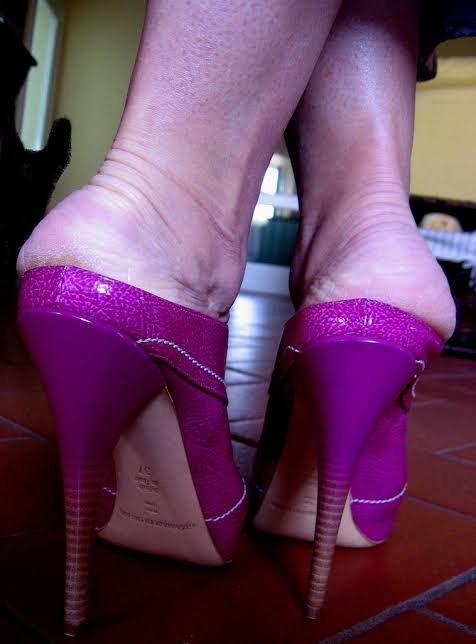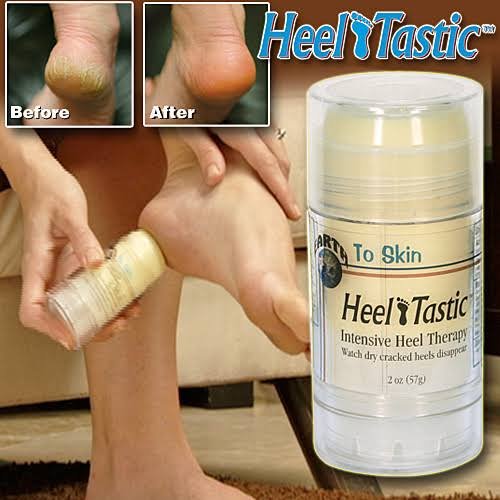As we all know, our physical assets include a bunch of conspicuous parts of our body which are very attractive. Actually, although most times the foot is not regarded as something valuable; but the truth is that, to an extent it's indeed a part of our bodily assets.
 (License: Public Domain]:
Pixabay
(License: Public Domain]:
Pixabay Well, I once came across a group of beautiful ladies. Their outfits were quite stunning. However, in the midst of my admiration something caught my attention. I noticed two amongst them had a cracked feet. Out of curiosity I couldn't help but ask myself why a beautiful and elegant young lady would have such a foot. As a matter of fact, I kept contemplating on this and at some point I felt I should carry out a personal research on the said topic. Now, saddle your seat belt as we take a journey to unravel the mystery behind a cracked heel. This promises to be intriguing and at the same time enlightening.
Understanding the basic concepts of a cracked heel
 (License: Public Domain]:
Flickr
(License: Public Domain]:
Flickr According to Deborah Fields in her article on News Medical Life Sciences, "a cracked heel is a condition produced by the occurrence of fissures in abnormally hard, dry skin such as the heels of the feet". Furthermore, in order to bring it down to a layman's level, I'd love to say that cracked heel is a narrow opening or slit in tissue usually visible on the heels. All the same, despite the fact that fissure is mainly a foot problem; it can still affect an individual's social life.
Honestly, a cracked heel is really unattractive to look at. In most cases, when the cracks or fissures become deep; standing, walking or any pressure placed on the heel can be painful. A question may pop up in your mind on who gets a cracked heel?. Well, the answer is not far fetched. It might interest you to know that anyone can get a cracked heel. Predisposition may be due to the following:
• Dry skin
• Atopic dermatitis
• Juvenile plantar dermatosis
• Palmoplantar keratoderma
• Psoriasis (especially Palmoplantar psoriasis)
• Systemic conditions (like diabetes and hypothyroidism).
How our heels get cracked
.jpeg) (License: Public Domain]:
Flickr
(License: Public Domain]:
Flickr Now, it's pertinent to pinpoint that dry thickened skin around the rim of the heel (i.e the corn and callus) is the very first step towards heel cracking. In addition to this, increased pressure on the fat pad under the heel causes it to expand sideways, leading to splitting or cracking of the callus. Nevertheless, there are some other factors that contributes to the splitting or cracking of the heel, and they include:
• Excessive weight or obesity
• Prolonge standing (especially on hard floors)
• Open-back shoes and sandals (because there do not provide support to the fat pad under the foot)
• A long or overuse of flipflops
Consequently, there are signs or symptoms of cracked heel. The first sign is the development of dry, hard, thickened skin around the rim of the heel. This is called a callus and may be a yellow or dark-brown discolored area of the skin. Initially, small cracks over the callus are visible. In a situation where it's left untreated; these cracks become deeper and eventually walking and standing will be painful.
If you've ever been to the rural environment, you'll agree with me that people living there have this common foot problem due to hard work; walking or working in muddy areas; and maybe overused of flipflops. In severe cases, if the crack is so deep that it begins to bleed, it can become infected and will lead to cellulitis or other foot diseases. Based on research studies, experts explain that cellulitis is a common bacterial infection of the lower dermis and subcutaneous tissue.
The question now is; how then do we salvage this...?
.jpeg) (License: Public Domain]:
Flickr
(License: Public Domain]:
Flickr Cracked heels can be treated by elevation of the areas; debridement of the dead tissue; and with antibiotics. But just like medical practitioners would say, 'prevention is better than cure'. In actuality, the best treatment for cracked heel is to prevent cracks from occurring in the first place. This can be done by the use of a moisturizing cream around the heels on a daily basis. The function performed by the moisturizing cream is that it makes the skin hydrated and supple. Secondly, special heel balms which possesses keratolytic or water retaining properties can be used. Likewise, a stone known as pumic stone can be rubbed gently against the callus to take away some of the thick hard skin before applying moisturizer. As a matter of fact i grew up to see people using this stone.
Moreover, for those that are already affected with cracked heels, the pains and fissures can be treated with a liquid, gel or spray bandage to reduce pain; protect; and allow more rapid healing. Also, Vitamin A which is generally associated with healthy vision; maintaining and rejuvenating skin tissue is recommended as a supplement to victims of cracked heels. Finally, in cases where there's no improvement, a visit to a podiatrist should be considered paramount. Well, I sincerely hope you've learned something from this article. Thanks for doing this with me. Till next time!
To read more about this topic, check out these REFERENCES
Cracked heel. Retrieved on 18th of March, 2019.
Reasons for severely cracked heels. Retrieved on 18th of March, 2019.
Images are from flickr and pixabay all licensed under creative commons and eligible for commercial use.
Yeah I seem to remember seeing a lot of those stones in bathrooms when I was a kid. Not so much now. Either footwear has gotten better, or people are working less menial jobs.
Yeah I seem to remember seeing a lot of those stones in bathrooms when I was a kid. Not so much now. Either footwear has gotten better, or people are working less menial jobs.
This post has been voted on by the SteemSTEM curation team and voting trail in collaboration with @curie.
If you appreciate the work we are doing then consider voting both projects for witness by selecting stem.witness and curie!
For additional information please join us on the SteemSTEM discord and to get to know the rest of the community!
Thank you
Twas a nice read bro. Good job 😊
I should look at heels much more I guess... :D